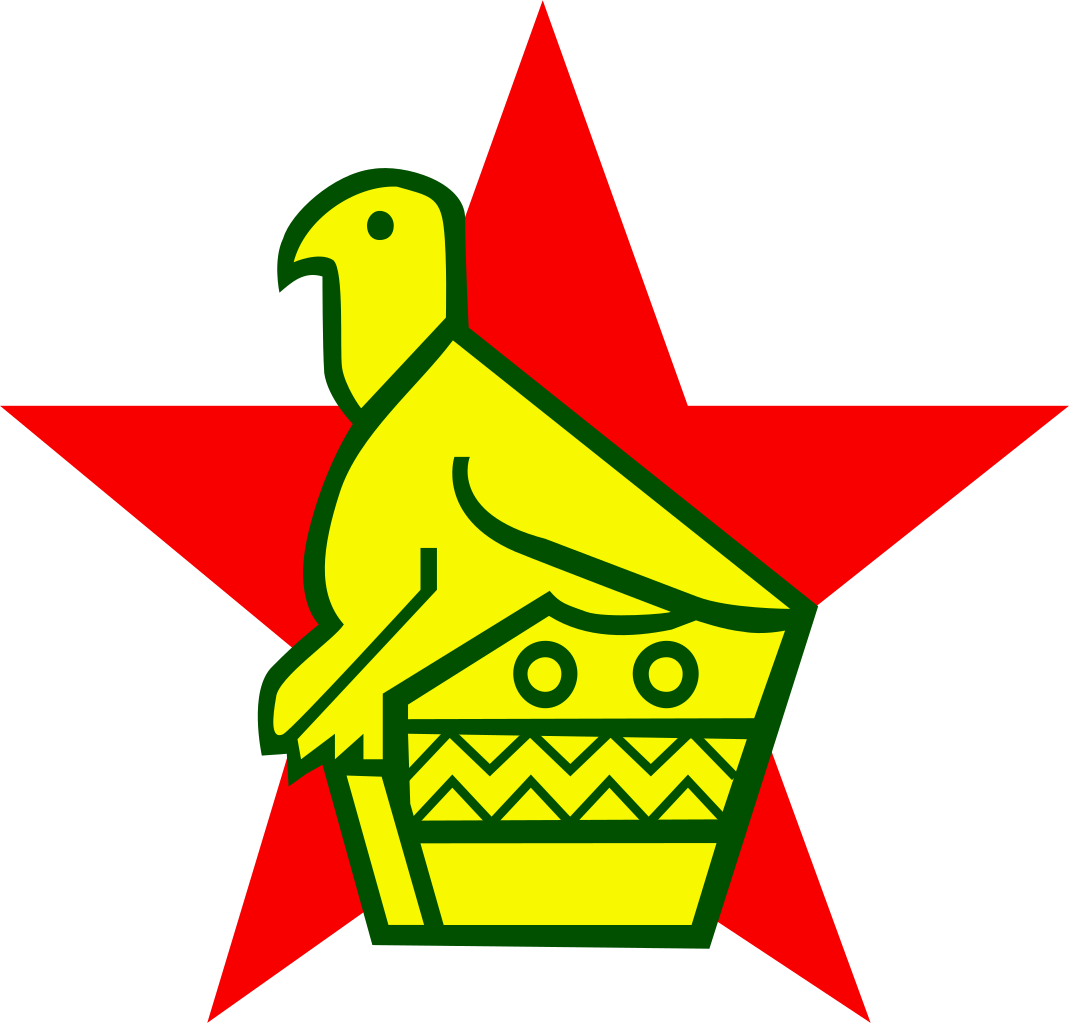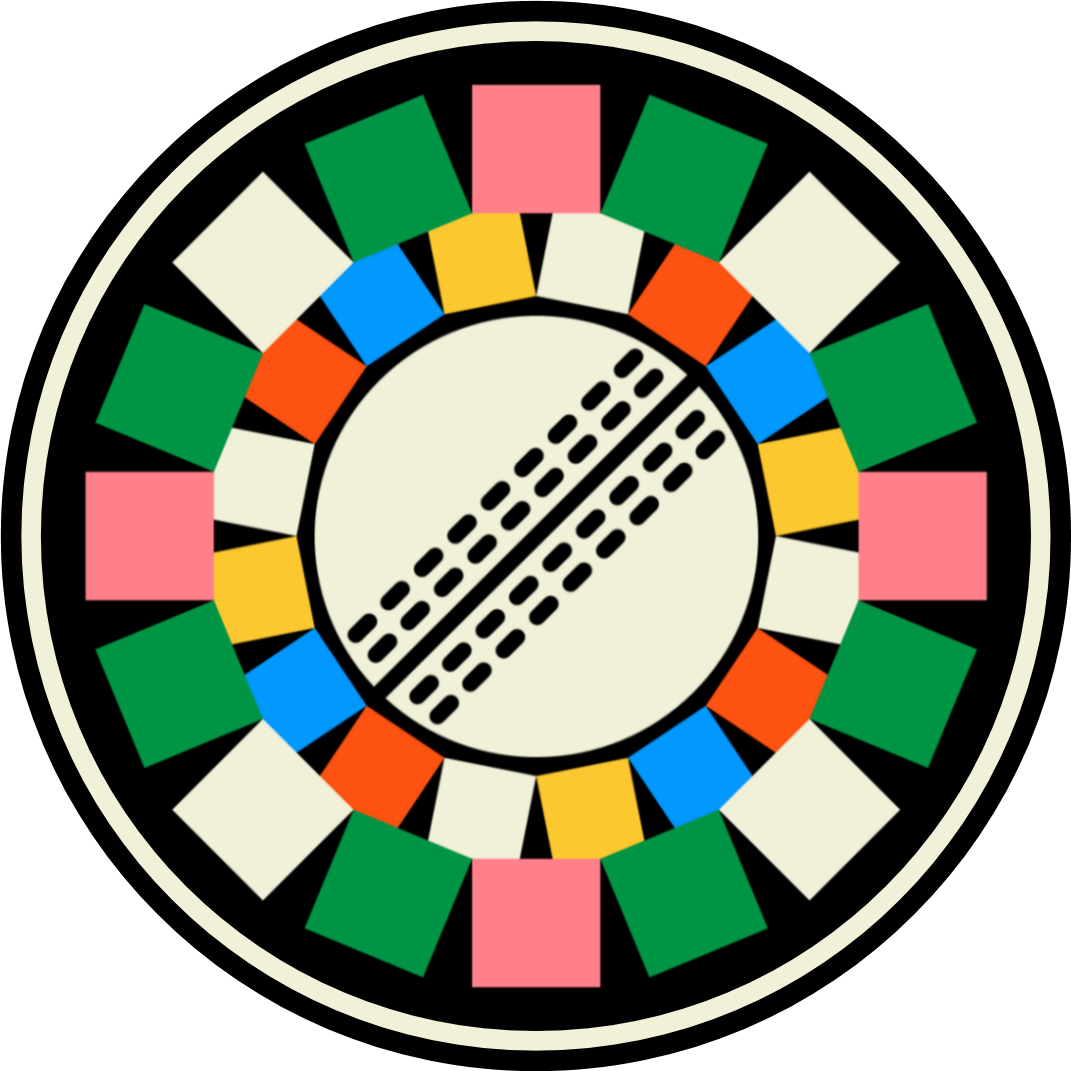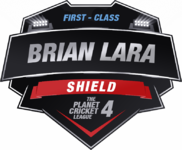You are using an out of date browser. It may not display this or other websites correctly.
One per decade draft | Poll open, see post #113 for team list
- Thread starter ahmedleo414
- Start date
@Aislabie still has a late pick, but @blockerdave you have the next pick
blockerdave
ICC Chairman
I’ll take CHARLIE HALLOWS for the 1920s.
Hallows only played 2 tests, and in each only batted 1 inns, finishing one 26 not out. His inns were 7 years apart. Having not batted in the first inns against Australia in 1921, he opened in the 2nd inns and made 16 not out. Against the West Indies in 1928, he opened with Sutcliffe and made 26, but England made 401 and won by an inns.
In first class cricket, he scored over 20,000 runs at 40.24 with 55 centuries. I guess his lack of opportunity was that he was primarily an opener when first Hobbs and Rhodes, then Hobbs and Sutcliffe were playing.
@ahmedleo414
Hallows only played 2 tests, and in each only batted 1 inns, finishing one 26 not out. His inns were 7 years apart. Having not batted in the first inns against Australia in 1921, he opened in the 2nd inns and made 16 not out. Against the West Indies in 1928, he opened with Sutcliffe and made 26, but England made 401 and won by an inns.
In first class cricket, he scored over 20,000 runs at 40.24 with 55 centuries. I guess his lack of opportunity was that he was primarily an opener when first Hobbs and Rhodes, then Hobbs and Sutcliffe were playing.
@ahmedleo414
Last edited:
I am going with Chris Tavaré played his first test in 1980 and final in 1989 so he is my pick from 1980s
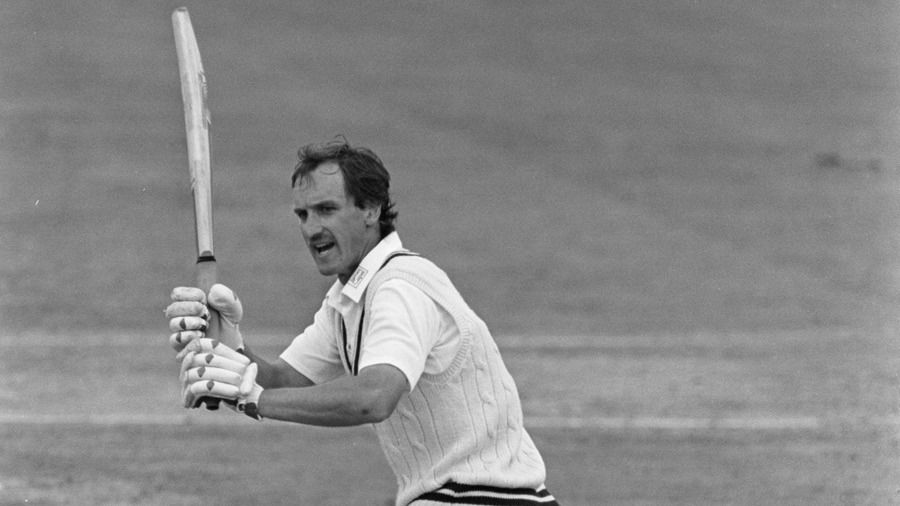
Stats|Matches|Runs|HS| Ave|100s/50s
Ave|100s/50s
First-Class |431|24,906|219|38.79|48/138
Test |31|1,755|149|32.50|2/12
Here is his bio from wiki:
"Everything about Chris Tavaré annoyed the Australians in the early 1980s, right down to his acute accent: he was the antithesis of their idea of a cricketer. An Oxford graduate, rather silent, effete-seeming, he simply refused to get out of their way and batted for hours, even days. The energy other players put into their strokes Tavaré expended by walking halfway to square-leg after every delivery. He could play shots and was particularly effective at smashing off-spinners over the top. But he didn't like to let on and rarely got the opportunity in Test cricket: though he much preferred to bat No. 3, England forced him to open because there was no one else."
Just as England forced him to bat at 2, i too will have Chris open with Vinod Kambli at 2
My playing XI:
@Yash. you are next

First-Class |431|24,906|219|38.79|48/138
Test |31|1,755|149|32.50|2/12
"Everything about Chris Tavaré annoyed the Australians in the early 1980s, right down to his acute accent: he was the antithesis of their idea of a cricketer. An Oxford graduate, rather silent, effete-seeming, he simply refused to get out of their way and batted for hours, even days. The energy other players put into their strokes Tavaré expended by walking halfway to square-leg after every delivery. He could play shots and was particularly effective at smashing off-spinners over the top. But he didn't like to let on and rarely got the opportunity in Test cricket: though he much preferred to bat No. 3, England forced him to open because there was no one else."
Just as England forced him to bat at 2, i too will have Chris open with Vinod Kambli at 2
My playing XI:
Vinod Kambli 1990s
Chris Tavaré 1980s
Eddie Paynter 1930s
Bob Cowper 1960s
Adam Voges 2010s
Tony Greig 1970s
- ?
- ?
Matthew Hoggard 2000s
- ?
- ?
@Yash. you are next
Aislabie
Test Cricket is Best Cricket
Moderator
Ireland
PlanetCricket Award Winner
Champions League Winner
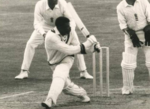
Decade: 1960s
Test stats: 2,523 runs @ 47.60 (6 centuries, best 258) in 29 matches
First-class stats: 9,489 runs @ 43.93 (26 centuries, best 258) in 141 matches
Again, in this team I'm looking for entertainment. It only makes sense therefore to select a batsman who was often described in such terms as "powerful", "magnificent" and "imperious" - and that man is the West Indies' Seymour Nurse, who will get full freedom to express himself in this circus show of a cricket team that I can't imagine ever drawing a cricket match.
@Aislabie 's XI so far:
1.
2.
3.
4.
5.
6.
7.
8.
9.
10.
11.
@VC the slogger is next
I shall go with Colin Bland, who apart from being one of South Africa's finest middle-order batsmen in the 1960s was also among the world's best fielders. Someone who set the benchmark for future South African fielding greats such as Jonty Rhodes, Herschelle Gibbs, AB de Villiers etc.
1)
 Barry Richards (1970s)
Barry Richards (1970s)
2)
3)
4)
 Stan McCabe (1930s)
Stan McCabe (1930s)
5)
 Colin Bland (1960s)
Colin Bland (1960s)
6)
7)
 Jack Gregory (1920s)
Jack Gregory (1920s)
8)
9)
 Ranji Hordern (1910s)
Ranji Hordern (1910s)
10)
 Jofra Archer (2010s)
Jofra Archer (2010s)
11)
 Frank Tyson (1950s)
Frank Tyson (1950s)
I have zero interest in doing lengthy writeups now that I can finally get back to managing leagues again. Here is my last one for a while..
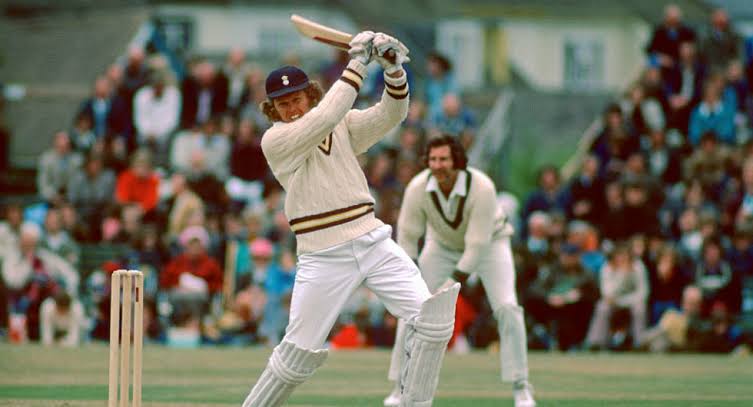
The inhuman system of apartheid was started by the South African government in 1948 as means to segregate and restrict the native black population of South Africa in nearly all aspects of life, whilst giving ultimate power to the white minority. By the mid-late 1960s however, this system itself resulted in the same white minority and South Africa as a whole being isolated on the international stage, particularly in the sporting world - starting from a ban from FIFA in 1963, the Olympics in 1964, and finally international cricket in 1970. The last of which arguably cost them what could have been an era of dominance in Test cricket from the late-1960s to mid-1970s akin to that of the West Indies and Australia in subsequent decades, with them possessing at the time players of the calibre of Graeme Pollock, Mike Procter, Lee Irvine, Garth le Roux, Vince van der Bijl, Trevor Goddard, Eddie Barlow, Clive Rice, Jimmy Cook, Peter Kirsten, Stephen Jefferies and not to mention the great Barry Richards.
Not since the days of Victor Trumper charging down the track to smash fast bowlers during cricket’s ‘Golden Age’ had there been an opening batsman as dominating as Richards in Test cricket, and certainly not one so consistent; even Trumper’s then impressive average of 39.04 was completely dwarfed by Richards’ 72.57 albeit from a much smaller sample size of matches. But given all his stupendous feats on the first-class arena, it is hard to imagine he would have averaged anything below 50 if given a full career. As a batsman, he had a superb technique that several observers including Don Bradman compared to that of Len Hutton, whom Richards idolised whilst growing up. But unlike Hutton, he also possessed that extra aggressive gear which gave him the ability to take apart the best of bowling attacks almost at will. Sometimes he would do it just to keep himself interested in the contest; along with many other things such as batting using only the leaning edge in an era where the edges were nowhere near as wide as in today’s bats, picturing the ground as a giant clock in his head and then smashing boundaries across it in a clockwise order. This almost careless attitude towards preserving his wicket at times resulted in several dismissals in the 70s and 80s during his career, and was perhaps the reason he wasn’t able to finish with 100 first-class hundreds despite being more than capable of doing so. There’s no telling how many more runs he could have scored if he had the same devotion towards statistics in the manner of a Geoffrey Boycott.
Richards did not have the greatest of starts to his cricketing career, aggregating just 156 runs at an average of 22.28 with 1 half-century in his first season for Natal in 1964/65. He steadily improved over the next couple of seasons after a very short stint at Gloucestershire whom he represented in just one match against the touring South Africans in 1965, scoring 59 against several of his future team-mates including Graeme Pollock, with whom he would form of of South African cricket’s most cherished batting partnerships, and who surprisingly ended up dismissing him in their first encounter. But the qualification rules in place then meant he wasn’t eligible to represent them at county level, something which would be changed three years later in the process allowing in several overseas stars including Richards himself. He finally made his mark in 1966/67, scoring 107 in 160 minutes for a South African XI against a touring Australian bowling attack led by Garth McKenzie and Neil Hawke, recording his maiden first-class century and finishing the season with 553 runs at an average of 50.27 - the first instance of him averaging more than 50 in a season, something which was to become the norm for the rest of his career.
He had his breakthrough season in 1967/68, topping the run charts in South Africa with 675 runs at 67.50 with 4 centuries ahead of Test regulars Graeme Pollock (452 runs at 50.22), Colin Bland (404 runs at 57.71), Eddie Barlow (447 runs at 55.87) among others, earning him the prestigious South African Annual Cricketer of the Year in 1968. His performances prompted Hampshire to sign him as their overseas player for the 1968 season even though he had yet to play Test cricket at the time. They would have their faith rewarded as Richards would go on to play for them for the next 11 seasons until 1978, scoring more than 1000 runs in every season bar his final one - including 2395 runs at 47.90 with 5 centuries in his very first season in 1968, after having boldly declared at the beginning of the season that he would score at least 2000 runs. He went one better in 1969, scoring an even more impressive 1440 runs at 57.60 with 5 centuries, considering the overall length of the County Championship had been contracted from more than 30 matches per season during his debut year to a little above 20 at the most. He also had scores of 86 and 120* for Hampshire against a touring West Indies lineup that included Garry Sobers and Lance Gibbs, followed by another 132 against the touring New Zealanders. Recognition finally came in the form of his being named one of Wisden’s Cricketers of the Year for 1969, even if it didn’t from the South African Test selectors just yet.
That would finally come in 1969/70 on South Africa’s next Test assignment against a touring Australian side led by Bill Lawry, against whom Richards had recorded his maiden first-class century on their previous visit in 1966/67. If Australia were merely outplayed on their previous trip to South Africa in 1966/67, they were well and truly butchered in 1969/70 - losing the 1st Test by 170 runs, 2nd Test by an innings and 129 runs, 3rd Test by 307 runs, and the 4th Test by 323 runs. Richards lit up the series with his belligerent strokeplay, scoring 508 runs at an average of 72.57 with 2 centuries and 2 half-centuries from 4 Tests, finishing second on runs to only Graeme Pollock (517 runs at 73.85) for the series. He managed an unspectacular 29 and 32 in his debut Test, but followed it up with a scintillating 140 off just 164 balls in the 2nd Test to score his maiden Test century whilst sharing a memorable 103-run stand with Graeme Pollock en route to an epic 274, a partnership that has since gone into South African cricket folklore. Another stroke-filled 65 off just 74 balls followed in the 3rd Test, and he finished the series on a high with 81 and 126 in the 4th Test. Apart from his batting exploits, Richards also played a central role from a strategic point helping the other South African batsmen decode Australia’s mystery spinner John Gleeson, who came into the series with a lot of hype due to his mysterious variations that the former figured out in no time. He also helped blunt their spearhead Garth McKenzie, then perhaps the world’s leading fast bowler in Test cricket. Both men would endure poor series, with Gleeson claiming 19 wickets at 38.94 (not once dismissing Richards throughout the series) and McKenzie a godawful 1 wicket at 333.00 from 3 Tests, a performance from which his career never truly recovered. South Africa whitewashed Australia 4-0 as a result, and the future appeared very bright for Richards after what was easily the most remarkable debut series by any player in Test history up to that point. Though no one knew it at the time, but these would be the only Test matches he would ever play throughout his career.
South Africa’s ban from international cricket would take effect in 1970, just as Richards was starting to hit his peak as a batsman. His performances against Australia prompted South Australia to sign him as their overseas player for 1970/71, where he would take out his frustration on not being able to play Test cricket in the most brutal manner possible. He wielded his bat like a sword, flaying almost every bowling attack he would come up against - starting with a Western Australia lineup featuring McKenzie, a raw but seriously quick Dennis Lillee and Tony Lock, against whom he bludgeoned 356 off just 381 balls at the WACA with 325 runs coming in a single day’s play. Next in line to face his wrath were the touring Englishmen there to contest the 1970/71 Ashes having in their ranks John Snow, Peter Lever, Ray Illingworth and Basil D’Oliveira - against whom he smashed 224 in a tour game, followed by 146 in another match where they had been reinforced with the likes of Bob Willis and Derek Underwood. Over the course of the season, he piled up staggering 1538 runs at an average of 109.85 with 6 centuries from only 10 matches. This extended to 1101 runs at 100.09 in the Sheffield Shield, seeing him join an elite group of players that included Don Bradman and Bill Ponsford among others for scoring more than 1000 runs in a season at an average of above 100.
His own countrymen weren’t spared either, with Richards becoming the first man in nearly 100 years of the Currie Cup (now known as the Sunfoil Series) to aggregate 1000 runs in a season, with 1089 runs at 77.78 with 4 centuries for Natal in 1971/72. To show it wasn’t a one-off, he replicated the feat in the very next home season in 1972/73, scoring 1247 runs at 69.47 with 5 centuries. Among his best performances during this ruthless spree were an innings of 219 against a Rhodesian attack led by the great Mike Procter in 1971/72, a masterful 73 in the worst of batting conditions in a match against Western Province which aggregated just 520 runs across 4 innings where only one other batsman could make it past fifty, and 197 against Rhodesia in 1972/73 where he got the better of Procter again, along with Robin Jackman, Paddy Clift, Jackie du Preez and Duncan Fletcher who formed the core of a powerful bowling lineup. Since then, five players namely Zander de Bruyn, Rilee Rossouw, Dean Elgar, Stephen Cook and Heino Kuhn have gone on to achieve the feat, but nobody has ever managed it twice like Richards.
He continued to score runs for fun in first-class cricket, aggregating 15607 runs at an average of 50.50 with 38 centuries and 91 half-centuries from 204 matches for Hampshire from 1968 to 1978, and a further 8380 runs at an average of 67.04 with 32 centuries for Natal between 1967/68 to 1975/76. But Richards next real challenge would only come in 1977/78, when he signed for Kerry Packer’s World Series Cricket as means to display his extraordinary talent on the world stage one final time. Display it he did, and how - scoring 554 runs at an average of 79.14 with 2 centuries 2 half-centuries (pretty similar to his Test stats) from 5 ‘Supertests’ for the WSC World XI between 1977/78 and 1978/79, seeing him finish with the best batting average among batsmen with a minimum of 500 runs in the competition including his namesake Viv Richards (1281 at 55.69) and Greg Chappell (1415 at 56.60). This in a tournament where he found himself pitted against some of the most renowned and deadly fast bowlers of the 1970s in Dennis Lillee, Michael Holding, Andy Roberts, Joel Garner and Len Pascoe among others. His two most memorable knocks in the competition were 207 against WSC Australia in 1977/78, where he shared a 135-run partnership with his namesake Viv and actually ended up out scoring both the latter along with Gordon Greenidge, who at the time were regarded as the most destructive batsmen in world cricket; and 101* whilst chasing a tricky target of 225 to lead WSC World XI to the title in 1978/79. With no more bowling attacks left to conquer, he announced his retirement at the conclusion of the tournament.
It would have been a perfect way to bow out for a player of his calibre, but Richards now aged 36 and nearly 3 years into retirement was tempted back into the fray to lead South Africa against the rebel touring sides from England, Sri Lanka and West Indies in 1981/82 and 1982/83. He showed occasional glimpses of the legendary batsman of yesteryears, but overall aggregated a very disappointing 252 runs at 28.00 with just 2 half-centuries from 6 ‘Rebel’ Tests, figures hardly befitting someone with his extraordinary ability. He retired again, this time for good - finishing his career with 28358 runs at an average of 54.74 with 80 centuries and 152 half-centuries from 339 matches. In an ultimate tribute of sorts, he was named by Don Bradman himself in the latter’s dream XI from the 20th century ahead of several other prominent opening batsmen, alongside the likes of Arthur Morris, Bradman, Sachin Tendulkar and Garry Sobers to name a few. Being the possessor of the unparalleled batting average of 99.94 and all that, it is safe to assume that he would know a thing or two about batsmen. To say Richards missed out on international cricket would be wrong; rather it was international cricket that missed out on him.
@blockerdave
1)
2)
3)
4)
5)
6)
7)
8)
9)
10)
11)
I have zero interest in doing lengthy writeups now that I can finally get back to managing leagues again. Here is my last one for a while..
The inhuman system of apartheid was started by the South African government in 1948 as means to segregate and restrict the native black population of South Africa in nearly all aspects of life, whilst giving ultimate power to the white minority. By the mid-late 1960s however, this system itself resulted in the same white minority and South Africa as a whole being isolated on the international stage, particularly in the sporting world - starting from a ban from FIFA in 1963, the Olympics in 1964, and finally international cricket in 1970. The last of which arguably cost them what could have been an era of dominance in Test cricket from the late-1960s to mid-1970s akin to that of the West Indies and Australia in subsequent decades, with them possessing at the time players of the calibre of Graeme Pollock, Mike Procter, Lee Irvine, Garth le Roux, Vince van der Bijl, Trevor Goddard, Eddie Barlow, Clive Rice, Jimmy Cook, Peter Kirsten, Stephen Jefferies and not to mention the great Barry Richards.
Not since the days of Victor Trumper charging down the track to smash fast bowlers during cricket’s ‘Golden Age’ had there been an opening batsman as dominating as Richards in Test cricket, and certainly not one so consistent; even Trumper’s then impressive average of 39.04 was completely dwarfed by Richards’ 72.57 albeit from a much smaller sample size of matches. But given all his stupendous feats on the first-class arena, it is hard to imagine he would have averaged anything below 50 if given a full career. As a batsman, he had a superb technique that several observers including Don Bradman compared to that of Len Hutton, whom Richards idolised whilst growing up. But unlike Hutton, he also possessed that extra aggressive gear which gave him the ability to take apart the best of bowling attacks almost at will. Sometimes he would do it just to keep himself interested in the contest; along with many other things such as batting using only the leaning edge in an era where the edges were nowhere near as wide as in today’s bats, picturing the ground as a giant clock in his head and then smashing boundaries across it in a clockwise order. This almost careless attitude towards preserving his wicket at times resulted in several dismissals in the 70s and 80s during his career, and was perhaps the reason he wasn’t able to finish with 100 first-class hundreds despite being more than capable of doing so. There’s no telling how many more runs he could have scored if he had the same devotion towards statistics in the manner of a Geoffrey Boycott.
Richards did not have the greatest of starts to his cricketing career, aggregating just 156 runs at an average of 22.28 with 1 half-century in his first season for Natal in 1964/65. He steadily improved over the next couple of seasons after a very short stint at Gloucestershire whom he represented in just one match against the touring South Africans in 1965, scoring 59 against several of his future team-mates including Graeme Pollock, with whom he would form of of South African cricket’s most cherished batting partnerships, and who surprisingly ended up dismissing him in their first encounter. But the qualification rules in place then meant he wasn’t eligible to represent them at county level, something which would be changed three years later in the process allowing in several overseas stars including Richards himself. He finally made his mark in 1966/67, scoring 107 in 160 minutes for a South African XI against a touring Australian bowling attack led by Garth McKenzie and Neil Hawke, recording his maiden first-class century and finishing the season with 553 runs at an average of 50.27 - the first instance of him averaging more than 50 in a season, something which was to become the norm for the rest of his career.
He had his breakthrough season in 1967/68, topping the run charts in South Africa with 675 runs at 67.50 with 4 centuries ahead of Test regulars Graeme Pollock (452 runs at 50.22), Colin Bland (404 runs at 57.71), Eddie Barlow (447 runs at 55.87) among others, earning him the prestigious South African Annual Cricketer of the Year in 1968. His performances prompted Hampshire to sign him as their overseas player for the 1968 season even though he had yet to play Test cricket at the time. They would have their faith rewarded as Richards would go on to play for them for the next 11 seasons until 1978, scoring more than 1000 runs in every season bar his final one - including 2395 runs at 47.90 with 5 centuries in his very first season in 1968, after having boldly declared at the beginning of the season that he would score at least 2000 runs. He went one better in 1969, scoring an even more impressive 1440 runs at 57.60 with 5 centuries, considering the overall length of the County Championship had been contracted from more than 30 matches per season during his debut year to a little above 20 at the most. He also had scores of 86 and 120* for Hampshire against a touring West Indies lineup that included Garry Sobers and Lance Gibbs, followed by another 132 against the touring New Zealanders. Recognition finally came in the form of his being named one of Wisden’s Cricketers of the Year for 1969, even if it didn’t from the South African Test selectors just yet.
That would finally come in 1969/70 on South Africa’s next Test assignment against a touring Australian side led by Bill Lawry, against whom Richards had recorded his maiden first-class century on their previous visit in 1966/67. If Australia were merely outplayed on their previous trip to South Africa in 1966/67, they were well and truly butchered in 1969/70 - losing the 1st Test by 170 runs, 2nd Test by an innings and 129 runs, 3rd Test by 307 runs, and the 4th Test by 323 runs. Richards lit up the series with his belligerent strokeplay, scoring 508 runs at an average of 72.57 with 2 centuries and 2 half-centuries from 4 Tests, finishing second on runs to only Graeme Pollock (517 runs at 73.85) for the series. He managed an unspectacular 29 and 32 in his debut Test, but followed it up with a scintillating 140 off just 164 balls in the 2nd Test to score his maiden Test century whilst sharing a memorable 103-run stand with Graeme Pollock en route to an epic 274, a partnership that has since gone into South African cricket folklore. Another stroke-filled 65 off just 74 balls followed in the 3rd Test, and he finished the series on a high with 81 and 126 in the 4th Test. Apart from his batting exploits, Richards also played a central role from a strategic point helping the other South African batsmen decode Australia’s mystery spinner John Gleeson, who came into the series with a lot of hype due to his mysterious variations that the former figured out in no time. He also helped blunt their spearhead Garth McKenzie, then perhaps the world’s leading fast bowler in Test cricket. Both men would endure poor series, with Gleeson claiming 19 wickets at 38.94 (not once dismissing Richards throughout the series) and McKenzie a godawful 1 wicket at 333.00 from 3 Tests, a performance from which his career never truly recovered. South Africa whitewashed Australia 4-0 as a result, and the future appeared very bright for Richards after what was easily the most remarkable debut series by any player in Test history up to that point. Though no one knew it at the time, but these would be the only Test matches he would ever play throughout his career.
South Africa’s ban from international cricket would take effect in 1970, just as Richards was starting to hit his peak as a batsman. His performances against Australia prompted South Australia to sign him as their overseas player for 1970/71, where he would take out his frustration on not being able to play Test cricket in the most brutal manner possible. He wielded his bat like a sword, flaying almost every bowling attack he would come up against - starting with a Western Australia lineup featuring McKenzie, a raw but seriously quick Dennis Lillee and Tony Lock, against whom he bludgeoned 356 off just 381 balls at the WACA with 325 runs coming in a single day’s play. Next in line to face his wrath were the touring Englishmen there to contest the 1970/71 Ashes having in their ranks John Snow, Peter Lever, Ray Illingworth and Basil D’Oliveira - against whom he smashed 224 in a tour game, followed by 146 in another match where they had been reinforced with the likes of Bob Willis and Derek Underwood. Over the course of the season, he piled up staggering 1538 runs at an average of 109.85 with 6 centuries from only 10 matches. This extended to 1101 runs at 100.09 in the Sheffield Shield, seeing him join an elite group of players that included Don Bradman and Bill Ponsford among others for scoring more than 1000 runs in a season at an average of above 100.
His own countrymen weren’t spared either, with Richards becoming the first man in nearly 100 years of the Currie Cup (now known as the Sunfoil Series) to aggregate 1000 runs in a season, with 1089 runs at 77.78 with 4 centuries for Natal in 1971/72. To show it wasn’t a one-off, he replicated the feat in the very next home season in 1972/73, scoring 1247 runs at 69.47 with 5 centuries. Among his best performances during this ruthless spree were an innings of 219 against a Rhodesian attack led by the great Mike Procter in 1971/72, a masterful 73 in the worst of batting conditions in a match against Western Province which aggregated just 520 runs across 4 innings where only one other batsman could make it past fifty, and 197 against Rhodesia in 1972/73 where he got the better of Procter again, along with Robin Jackman, Paddy Clift, Jackie du Preez and Duncan Fletcher who formed the core of a powerful bowling lineup. Since then, five players namely Zander de Bruyn, Rilee Rossouw, Dean Elgar, Stephen Cook and Heino Kuhn have gone on to achieve the feat, but nobody has ever managed it twice like Richards.
He continued to score runs for fun in first-class cricket, aggregating 15607 runs at an average of 50.50 with 38 centuries and 91 half-centuries from 204 matches for Hampshire from 1968 to 1978, and a further 8380 runs at an average of 67.04 with 32 centuries for Natal between 1967/68 to 1975/76. But Richards next real challenge would only come in 1977/78, when he signed for Kerry Packer’s World Series Cricket as means to display his extraordinary talent on the world stage one final time. Display it he did, and how - scoring 554 runs at an average of 79.14 with 2 centuries 2 half-centuries (pretty similar to his Test stats) from 5 ‘Supertests’ for the WSC World XI between 1977/78 and 1978/79, seeing him finish with the best batting average among batsmen with a minimum of 500 runs in the competition including his namesake Viv Richards (1281 at 55.69) and Greg Chappell (1415 at 56.60). This in a tournament where he found himself pitted against some of the most renowned and deadly fast bowlers of the 1970s in Dennis Lillee, Michael Holding, Andy Roberts, Joel Garner and Len Pascoe among others. His two most memorable knocks in the competition were 207 against WSC Australia in 1977/78, where he shared a 135-run partnership with his namesake Viv and actually ended up out scoring both the latter along with Gordon Greenidge, who at the time were regarded as the most destructive batsmen in world cricket; and 101* whilst chasing a tricky target of 225 to lead WSC World XI to the title in 1978/79. With no more bowling attacks left to conquer, he announced his retirement at the conclusion of the tournament.
It would have been a perfect way to bow out for a player of his calibre, but Richards now aged 36 and nearly 3 years into retirement was tempted back into the fray to lead South Africa against the rebel touring sides from England, Sri Lanka and West Indies in 1981/82 and 1982/83. He showed occasional glimpses of the legendary batsman of yesteryears, but overall aggregated a very disappointing 252 runs at 28.00 with just 2 half-centuries from 6 ‘Rebel’ Tests, figures hardly befitting someone with his extraordinary ability. He retired again, this time for good - finishing his career with 28358 runs at an average of 54.74 with 80 centuries and 152 half-centuries from 339 matches. In an ultimate tribute of sorts, he was named by Don Bradman himself in the latter’s dream XI from the 20th century ahead of several other prominent opening batsmen, alongside the likes of Arthur Morris, Bradman, Sachin Tendulkar and Garry Sobers to name a few. Being the possessor of the unparalleled batting average of 99.94 and all that, it is safe to assume that he would know a thing or two about batsmen. To say Richards missed out on international cricket would be wrong; rather it was international cricket that missed out on him.
@blockerdave
@blockerdave missed his deadline, @Bevab if you are up for if you can continue with the draft. Otherwise, @Aislabie you have the next pick
blockerdave
ICC Chairman
Aislabie
Test Cricket is Best Cricket
Moderator
Ireland
PlanetCricket Award Winner
Champions League Winner
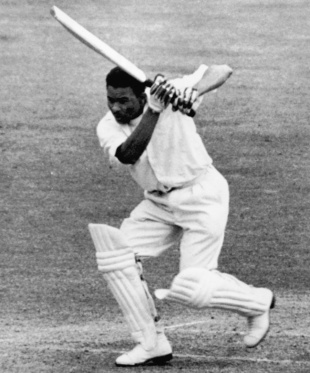
Decade: 1950s
Test stats: 1,331 runs @ 31.69 (4 centuries, best 168) and 48 wickets @ 33.85 (1 5WI, best 5/90) in 26 matches
First-class stats:4,031 runs @ 40.31 (10 centuries, best 169) and 121 wickets @ 31.02 (2 5WI, best 5/63) in 70 matches
Well I'm looking for entertainers, so I've gone for a cavalier young batsman, known mostly for how hard he could hit a cricket ball. Sadly for him and for cricket in general, he would lose his life in 1959 after a bad car crash in Stoke; had that not happened he absolutely wouldn't have been eligible here. His tidy off-spin should complete a spin attack that might have been a bit threadbare if we'd relied on Fender alone.
@Aislabie 's XI so far:
1.
2.
3.
4.
5.
6.
7.
8.
9.
10.
11.
@blockerdave again
blockerdave
ICC Chairman


Collie Smith
Decade: 1950s
Test stats: 1,331 runs @ 31.69 (4 centuries, best 168) and 48 wickets @ 33.85 (1 5WI, best 5/90) in 26 matches
First-class stats:4,031 runs @ 40.31 (10 centuries, best 169) and 121 wickets @ 31.02 (2 5WI, best 5/63) in 70 matches
Well I'm looking for entertainers, so I've gone for a cavalier young batsman, known mostly for how hard he could hit a cricket ball. Sadly for him and for cricket in general, he would lose his life in 1959 after a bad car crash in Stoke; had that not happened he absolutely wouldn't have been eligible here. His tidy off-spin should complete a spin attack that might have been a bit threadbare if we'd relied on Fender alone.
@Aislabie 's XI so far:
1.
2.
3.
4.
Seymour Nurse
5.
Collie Smith
6.
7.
Percy Fender
8.
Ryan Harris
9.
Fanie de Villiers
10.
Shane Bond
11.
Tony Gray
@blockerdave again
I'm not sure you'll be needing much spin with that seam attack!
blockerdave
ICC Chairman
My next choice will be Karun Nair for the 2010s. I feel a little queasy about picking any players who would/should have already played in 2020 but for games being cancelled, so someone who's not been picked since 2017 seems better.
English fans will recall him as the man who put the coup de grace on the implosion of Alastair Cook's dour, insipid and shocking captaincy reign by scoring a triple century as India smashed England 4-0 in 2016. This made him only the 2nd Indian to score a test triple hundred (the other being Sehwag), and also only the third batsman ever to make his maiden test hundred into a triple.
Nair averages 62.33 from his 6 matches, and his first class record is 5,631 runs at 48.12.
@ahmedleo414
English fans will recall him as the man who put the coup de grace on the implosion of Alastair Cook's dour, insipid and shocking captaincy reign by scoring a triple century as India smashed England 4-0 in 2016. This made him only the 2nd Indian to score a test triple hundred (the other being Sehwag), and also only the third batsman ever to make his maiden test hundred into a triple.
Nair averages 62.33 from his 6 matches, and his first class record is 5,631 runs at 48.12.
- Marcus Trescothick (2000)
- Charlie Hallows (1920)
- x
- Dave Houghton (1990)
- Lee Irvine (1970)
- Karun Nair (2010)
- x
- Frank Foster (1910)
- Hedley Verity (1930)
- Charlie Griffith (1960)
- x
@ahmedleo414
Aislabie
Test Cricket is Best Cricket
Moderator
Ireland
PlanetCricket Award Winner
Champions League Winner
Sobers and... I know Lawrence Rowe had an obscene Test debut, was it him?third batsman ever to make his maiden test hundred into a triple
Similar threads
- Replies
- 8
- Views
- 2K
- Replies
- 174
- Views
- 38K
D
Users who are viewing this thread
Total: 1 (members: 0, guests: 1)

